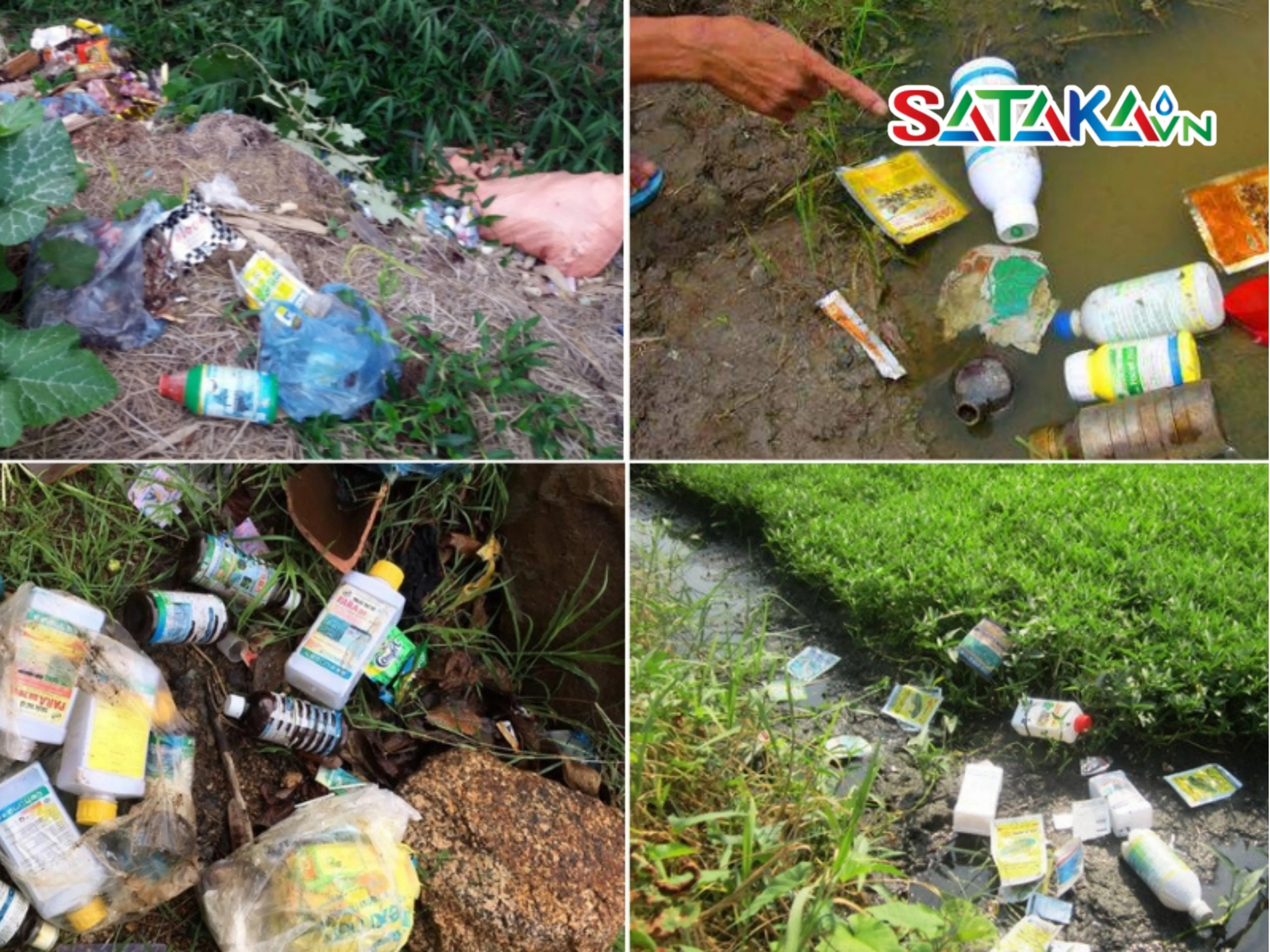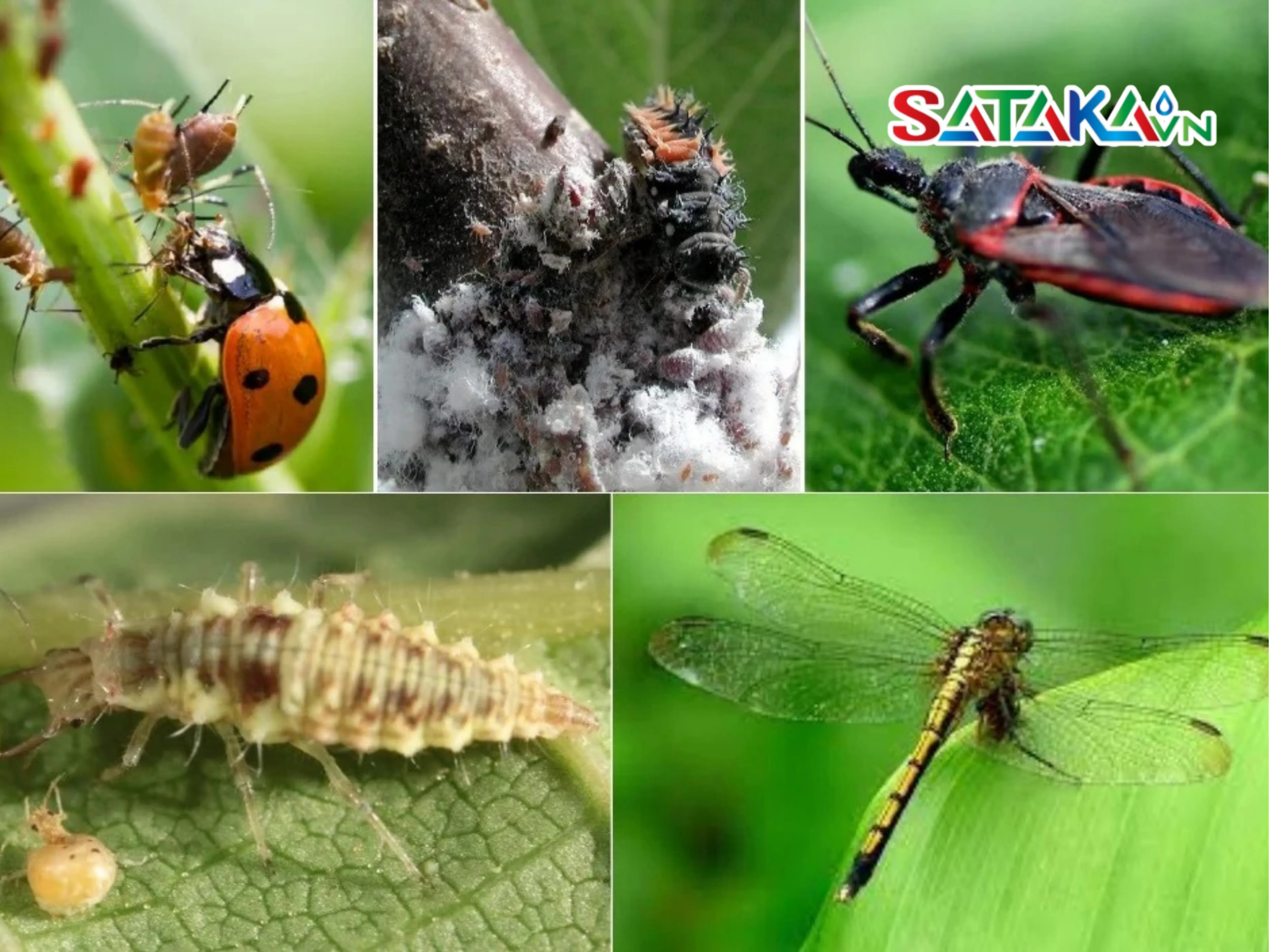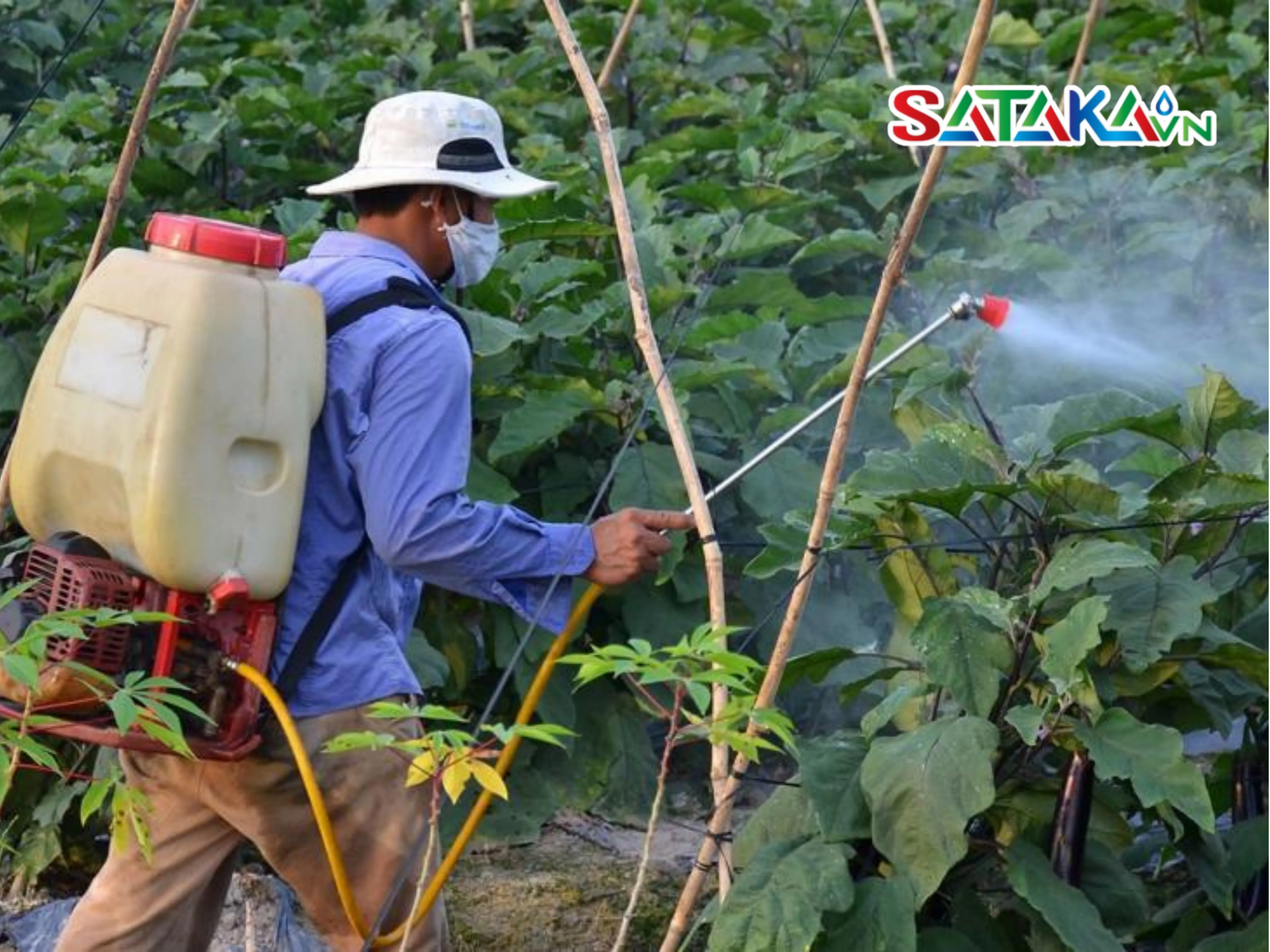Discover the differences between chemical and biological pesticides to choose the right solution for your crops. Sataka provides expert insights and optimal plant protection strategies, helping farmers achieve higher yields, reduce risks, and move toward sustainable, eco-friendly agriculture.
In modern agriculture, Distinguishing Chemical and Biological Pesticides has become a crucial factor, helping farmers, input suppliers, and farm owners choose the most effective crop protection solutions. Each type of pesticide has unique characteristics, suitable for specific farming conditions and production goals. This article will help you clearly understand the differences between these two categories, thereby making the best decision for your crops.
1. Overview of Chemical and Biological Pesticides
Throughout agricultural development, humans have invented and applied various pesticides to control pests and increase crop yields.
1.1 Concept of Chemical Pesticides
Chemical pesticides are products synthesized from chemical compounds, designed to eliminate or control harmful pests. The active ingredients are laboratory-derived, produced through complex chemical reactions.
Some common chemical pesticides include:
- Pyrethroid-based insecticides
- Triazole fungicides
- Glyphosate herbicides
- Carbamate and Organophosphate insecticides
1.2 Concept of Biological Pesticides
Biological pesticides are natural products extracted from microorganisms, plants, or natural biological processes. They aim to control pests without negative impacts on the environment or beneficial organisms.
Major groups of biological pesticides include:
-
Microbial-based: Bacillus thuringiensis, Trichoderma...
- Botanical-based: Neem, Rotenone, essential plant oils...
- Pheromones: insect attractants or disruptors
- Secondary products: plant growth stimulants or resistance enhancers

Overview of Chemical and Biological Pesticides.
2. Criteria for Distinguishing Chemical and Biological Pesticides
2.1 Origin and Composition
Chemical pesticides:
- Artificially synthesized in laboratories
- Contain specially designed chemical active ingredients
- Often have complex formulas with additives
- Industrial-scale production ensures uniform quality
Biological pesticides:
- Derived from nature: microorganisms, plants, animals
- Main components are naturally occurring substances
- Contain little or no synthetic chemicals
- Often produced using biotechnological methods
2.2 Mode of Action on Pests
Chemical pesticides:
- Directly affect insect nervous and respiratory systems
- Disrupt vital biochemical processes in pests
- Rapid killing effect, visible within hours
- Work mainly through “contact and kill” mechanisms
Biological pesticides:
- Inhibit pest growth or cause diseases via biological mechanisms
- Compete for living space, parasitize, or secrete antibiotics
- Create natural protective barriers for crops
- Attract, repel, or disrupt insect reproduction
2.3 Environmental and Beneficial Organism Impact
Chemical pesticides:
- Leave residues in soil, water, and crops
- Harm beneficial organisms like bees, butterflies, predators
- Risk polluting groundwater
- Can accumulate in the food chain
Biological pesticides:
- Decompose quickly in the environment
- Little to no effect on beneficial organisms
- Maintain ecological balance
- Rarely leave harmful residues
2.4 Speed and Effectiveness
Chemical pesticides:
- Act quickly, results visible within hours to days
- Highly effective during severe outbreaks
- Broad-spectrum action against multiple pests
- Long-lasting depending on active ingredient and dosage
Biological pesticides:
- Slower effect, typically 3–5 days
- Best for prevention or early-stage control
- Narrower spectrum, more specific to pests
- Require correct timing and conditions for optimal effect
2.5 Pest Resistance Development
Chemical pesticides:
- High risk of resistance with repeated use
- Strong selective pressure promotes pest adaptation
- Requires pesticide rotation to reduce resistance
- Many pests are already resistant to common actives
Biological pesticides:
- Much lower resistance risk
- Complex and diverse mechanisms hinder resistance development
- Can be used long-term with fewer resistance issues
- Easily rotated with other control methods

Criteria for Distinguishing Chemical and Biological Pesticides.
3. Advantages and Disadvantages of Each Type
3.1 Chemical Pesticides
Advantages:
- Fast action, effective pest elimination
- Control of severe outbreaks
- Affordable, widely accessible
- Broad-spectrum action tackles multiple issues
- Easy storage and application
Disadvantages:
- Potentially hazardous to users
- Negative environmental and ecological impacts
- Residues in crops affect consumer health
- Disturb ecological balance, reduce biodiversity
- Resistance development if misused
3.2 Biological Pesticides
Advantages:
- Safe for users and consumers
- Eco-friendly, harmless to beneficial organisms
- Minimal residues in produce
- Suitable for organic and sustainable farming
- Lower resistance risk
Disadvantages:
- Slower action, not ideal for severe outbreaks
- Higher cost than traditional chemicals
- Require advanced application techniques
- Effectiveness depends on environmental conditions
- Short shelf-life, need special storage

Advantages and Disadvantages of Each Type.
4. When to Use Chemical vs. Biological Pesticides
4.1 Based on Pest Development Stage
Use biological pesticides when:
- For prevention before pest occurrence
- At the first signs of infestation
- Pest density is below economic threshold
- In Integrated Pest Management (IPM) programs
- During recovery after outbreak control
Use chemical pesticides when:
- Severe outbreaks exceed economic threshold
- Rapid treatment is required to save crops
- Dangerous pests spread quickly
- Biological methods prove insufficient
- Weather conditions hinder biological efficacy
4.2 Based on Crop Type and Farming Conditions
Biological pesticides are ideal for:
- Organic and sustainable farming
- Safe vegetable and premium fruit production
- Ecologically sensitive or water-adjacent areas
- Farms certified under GAP or organic standards
- Nurseries, young crops, pre-harvest stages
Chemical pesticides are ideal for:
- Large-scale farming needing quick control
- Areas with recurring, severe pest history
- New or difficult-to-control pests
- High-value crops where losses are unacceptable
- Long-term protection requirements
See more: Fertilizer Selection Criteria: How to Choose the Right Fertilizer for Your Crops

When to Use Chemical vs. Biological Pesticides.
5. The Trend Toward Biological Pesticides in Sustainable Agriculture
5.1 Role of Biological Pesticides in Modern Farming
Biological solutions are becoming a priority due to their advantages:
- Ensure safe food without harmful residues
- Protect the environment and biodiversity
- Reduce carbon emissions, support climate change mitigation
- Produce higher-value agricultural products
- Promote circular, sustainable farming systems
5.2 Integrated Solutions for Optimal Effectiveness
Rather than relying solely on one type, farmers increasingly combine both:
- Apply Integrated Pest Management (IPM) strategies
- Use biological pesticides for prevention and early control
- Apply chemical pesticides only when necessary, in minimal doses
- Rotate products to limit resistance
- Employ pest monitoring and early-warning technologies
Distinguishing chemical and biological pesticides goes beyond recognition — it forms the foundation for building sustainable crop protection strategies. By selecting the right type for the right situation, farmers can safeguard yields while minimizing negative impacts on the environment and public health.
Sataka chemical and biological pesticides both play important roles in modern farming systems. Instead of complete reliance on one, a balanced, informed combination ensures the highest effectiveness while preserving ecological and human well-being. Apply this knowledge to design a comprehensive, effective, and sustainable plant protection strategy — meeting the growing demand for safe, high-quality agricultural products.
SATAKA VIETNAM JOINT STOCK COMPANY
Address: 246 Nguyen Kim Cuong Street, Tan Thanh Dong Commune, Cu Chi District, Ho Chi Minh City
Hotline: 0856.555.585 or 0789.917.927
Website: https://sataka.com.vn/


